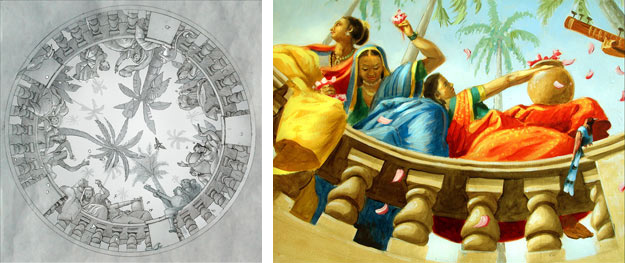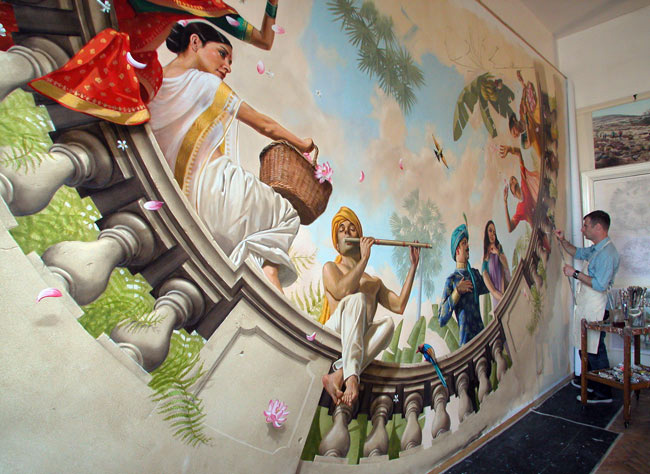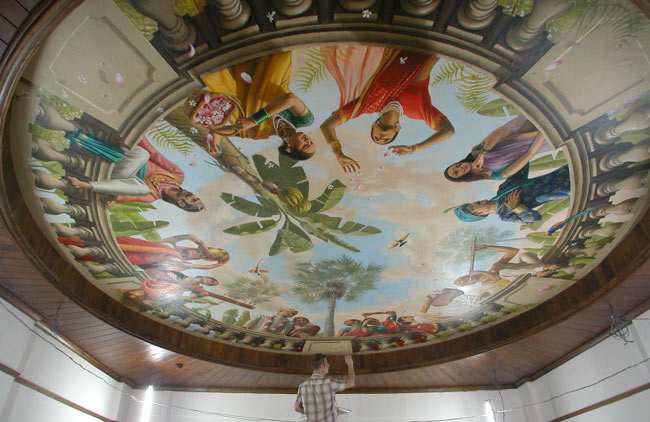Initial ideas
The first stage with commissioning a mural is to discuss ideas themes and location. This is just an informal chat that allows ideas to bounce around. From the onset of the project, the emphasis is on collaborative design and giving ideas the chance to evolve. An initial estimate of the project can sometimes be given at this point.
The next stage would be for Mel to visit the site for a general assessment of the area, take measurements and provide an accurate cost. Alternatively, photographs of the site could be provided along with dimensions or architectural plans.

Initial design for ceiling mural and colour sketch for Barnes Hall, Colombo, Sri Lanka
Mural design
After discussing ideas and a retaining deposit paid, a sketch or visual would be drawn up. Further adjustments can be made if need be. When the client is happy with the design, production of the mural can commence.
Mural production
Once the design is finalised, work would then start on the mural. This can either be painted on site or on canvas in the studio for later installation. Murals are often painted on site if the mural is very large or covers complex areas. In this instance, all work is carried out in a discreet manner and disturbance is kept to a minimum.

Production of the mural in the studio

Adding the final touches to the mural after installation, Barnes Hall, Colombo, Sri Lanka
Mural installation using marouflage
A surprising amount of murals can still be painted in the studio. Murals can even be painted in sections for piecing together on site, the joins being undetectable when finished. When work is carried out in the studio, the client can be kept up to date with the progress of the painting through images sent via email. Depending on the size of the mural, installation can usually be achieved in a day. The mural is then usually left for a few days for the adhesive to cure. Once this has finished, another site visit is made so that the mural can then be painted with a coat of durable varnish. This will give the mural a very tough finish and allow it to be cleaned if necessary. When murals are installed using these techniques, they will be indistinguishable from murals painted directly onto the wall surface. An added benefit of this method is the possibility for removing the mural for installation elsewhere. Accommodation, travel costs and accessibility issues on site are also reduced.
Payment terms
With large murals, one third of the overall payment is required as deposit, one third approximately half way through the project and one third upon completion of the mural.
